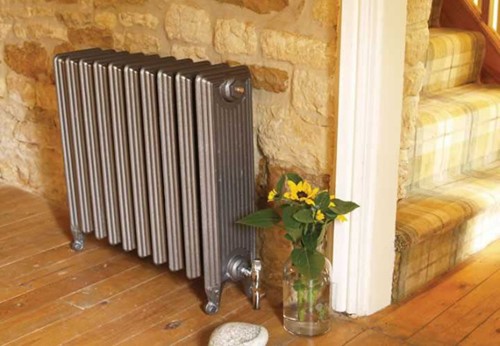Posted: Wednesday, October 21, 2020

When you’re renovating a home or even a room, it’s helpful to know how many radiators you may need - there isn’t a set rule for each space.
To do this, you’ll need to use what’s called a BTU calculator. This is much more precise than simply thinking along lines of filling most wall space with a radiator - unless there’s a window or TV already there. There are lots of questions you need to consider when buying.
So, Trads is here to help by guiding you through them as well as explaining BTU so you have the answer to ‘how many radiators do I need?’. Read on to find out…
The position of a radiator in a room really depends on the type that you’ve bought. A standard radiator is fine to be hidden away behind furniture, such as a sofa or bed, but if you’ve picked out a decorative model, then you’ll more than likely want it on display.
As far as heat output goes, the physical position shouldn’t matter too much. With the right radiator BTUs (heat output), the whole room should get to the optimal temperature you’ve set. Fitting radiators under a window is always a great way of making a room feel less cluttered, and a draught will be warmed before passing around the room.
You could even fit vertical steel radiators on opposite sides of a room, such as a kitchen or a bathroom, for perfectly even heating.
Not all radiators will work in every room in your home, as there are various types of central heating radiators.
A heated towel rail for installation within a bathroom is ideal. You can store towels on them, keep towels warm while you are showering or in the bath.
Most bathrooms are quite small so don’t go over the top when it comes to heat output. Small spaces can heat up quickly. A vertical column radiator also works well with limited wall space.
Like the bathroom, your kitchen can feel a bit cool at times with laminate or tiled floors, especially if you don't have the right heating.
So, again like the bathroom, you can get away with installing vertical radiators in them because they provide more than enough heat without taking up much wall space. Plus, they can be a statement piece.
As you’re unlikely to have many guests dropping into your bedroom, spending a lot of money on a designer or decorative radiator may not be the best option.
Column or modern cast-iron radiators will perform just as well and will seriously reduce your purchasing costs in comparison to a model that puts decor first. They aren’t stylish but they perform faultlessly, which is the most important thing when warming a bedroom.
The living room, like your kitchen, is where you’ll entertain people. So, unless you’re on a budget, we wouldn’t suggest plain radiators - make a statement.
Decorative radiators can create a real focal point while still providing more than enough heat. Coloured radiators, like those you’ll find with our steel column radiators, make a true statement with bold shades of blue, red, gold and purple.
The size of the radiator you will need depends on two important factors.
The first is the temperature that you want to maintain in your chosen room - which is relatively straightforward. If you want a high temperature, you will need larger radiators. However, the room size will also affect this - smaller rooms heat up quickly because there’s less space.
The second factor can be more complicated, which is to take into account is the heat loss from your room. These can depend on the size or number of windows, the number of doors and, in particular, the construction materials used in your home. Not all homes have solid, insulated walls.
If you choose a radiator that’s too large in size, it won’t be economical. If you go too small, the room won’t reach the temperature you want.
This is where the BTU comes in. To calculate the radiator size for a room, you need to understand its BTU requirement...
BTU means ‘British Thermal Unit’ and it’s a measure of heat output from a radiator.
Depending on the size of your room, the number and type of windows and what the room is used for, you may need more or less heat being provided into that space. If you have a higher BTU requirement, it will often be better to use more than one radiator to heat a room.
The total BTU you need for a room can be met by several smaller radiators or a few large radiators - it all depends on the layout of the room you want to heat.
To calculate your BTU, it will depend on how many radiators are in your chosen room. Alternatively, by entering specific details, such as room measurements, you can find out how many radiators you will need.
If you already have radiators in a room and you want to update them all, you will need to divide the total BTU requirement of the room by the number of radiators. This will calculate the average BTU's required per radiator.
Getting the right heat output from your new radiator can be important as you want to generate enough heat to be warm but not go over the top and ruin your efficiency and pay more on your heating bills.
You can use our BTU calculator to size and quantity of radiators needed for a room. You’ll need to make sure you have the following details:
Is it time you updated your radiators? Here at Trads, we have an excellent range of beautiful cast iron and steel radiators to update your home with!
Feel free to contact us if you need any help choosing a radiator
< Back To Blog